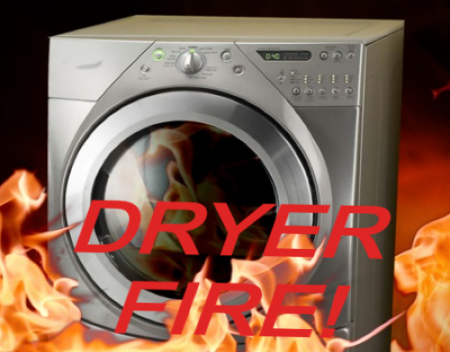Blog Categories
- Appliances Four
- Athletic Seating
- Auto Helpers
- Automated Stock Rooms
- Chocolate Four
- CuraFlo
- Damaged Goods Dating
- Flood Insurance Four
- Game Addict
- Hi Tech Pest Control
- HVAC Four
- Medical Labels Four
- Mental Health Four
- National CWS
- Promotional Ideas
- Seguros Lara Insurance
- Stem Cell Worx
- The Hidden Truth
- The Last Refuge
- The Mozilla Blog
- Video Editing Four
- Web Design Dev
- Website Development Four
- Windows Blog
Preventing Dryer Fires

According to the National Fire Protection Association, firefighter all around the country responds to roughly 14,000 house fires caused by clothes dryers. Read on to ensure you don’t become one of them.
Over a quarter of these fires are caused by an accumulation of lint. This means that not cleaning your appliance’s vent could set you up for a dangerous, flammable situation. Some dryers have indicators that are designed to alert you when the lint build-up has reached an excessive level. Samsung’s Vent Sensor and LG’s FlowSense can both detect completely blocked vents but are not as effective at detecting partially blocked vents. The same can be said for the check-vent features on Whirlpool and Maytag dryers.
The NFPA claims that hundreds of people die each year due to these dryer house fires. To cull these alarming numbers, we came up with some simple practices to help ensure your safety.
Clean the Lint Filter
This is the most obvious and straightforward way to prevent a dryer fire. The lint filter shouldn’t be cleaned once a month, or even once a week, but after every load. Not only does this simple process help prevents fires, but it allows your laundry to fry faster.
Replace Accordion-Style Ducts
Dryers are usually equipped with a 4-inch vent in the back, which is connected to the exterior vent with a duct. However, not all of these ducts can be considered safe. If you see a plastic or foil accordion-style duct connecting your dryer to the vent, you should probably replace it. These are dangerous because they can sag, allowing lint to build up at low points and trapping lint in the ridges. You should consider a rigid metal duct or a flexible metal duct.
Clean the Dryer Annually
If you notice that your dryer is taking longer than usual, there might be a blockage in the dryer’s vent system. When the load is drying, go outside and take a look at the vent. Is there any exhaust air? If not, the vent or exhaust duct is potentially blocked with lint. Disconnect your dryer from the power source. If it’s a gas dryer, make sure you also turn off the gas valve near the dryer. When moving the dryer, do it slowly and carefully. Also, take care not to damage or overstretch the gas line.
Disconnect the duct from the dryer, and vacuum both the duct and dryer as much as you can. When possible, separate the duct into shorter sections for better access, then reassemble and attach the duct to the dryer. Make sure all joints in the duct are connected and held together with clamps or foil tape. When you’re done, return the dryer to its original spot and reconnect the power.
Re Posted From: Preventing Dryer Fires

According to the National Fire Protection Association, firefighter all around the country responds to roughly 14,000 house fires caused by clothes dryers. Read on to ensure you don’t become one of them.
Over a quarter of these fires are caused by an accumulation of lint. This means that not cleaning your appliance’s vent could set you up for a dangerous, flammable situation. Some dryers have indicators that are designed to alert you when the lint build-up has reached an excessive level. Samsung’s Vent Sensor and LG’s FlowSense can both detect completely blocked vents but are not as effective at detecting partially blocked vents. The same can be said for the check-vent features on Whirlpool and Maytag dryers.
The NFPA claims that hundreds of people die each year due to these dryer house fires. To cull these alarming numbers, we came up with some simple practices to help ensure your safety.
Clean the Lint Filter
This is the most obvious and straightforward way to prevent a dryer fire. The lint filter shouldn’t be cleaned once a month, or even once a week, but after every load. Not only does this simple process help prevents fires, but it allows your laundry to fry faster.
Replace Accordion-Style Ducts
Dryers are usually equipped with a 4-inch vent in the back, which is connected to the exterior vent with a duct. However, not all of these ducts can be considered safe. If you see a plastic or foil accordion-style duct connecting your dryer to the vent, you should probably replace it. These are dangerous because they can sag, allowing lint to build up at low points and trapping lint in the ridges. You should consider a rigid metal duct or a flexible metal duct.
Clean the Dryer Annually
If you notice that your dryer is taking longer than usual, there might be a blockage in the dryer’s vent system. When the load is drying, go outside and take a look at the vent. Is there any exhaust air? If not, the vent or exhaust duct is potentially blocked with lint. Disconnect your dryer from the power source. If it’s a gas dryer, make sure you also turn off the gas valve near the dryer. When moving the dryer, do it slowly and carefully. Also, take care not to damage or overstretch the gas line.
Disconnect the duct from the dryer, and vacuum both the duct and dryer as much as you can. When possible, separate the duct into shorter sections for better access, then reassemble and attach the duct to the dryer. Make sure all joints in the duct are connected and held together with clamps or foil tape. When you’re done, return the dryer to its original spot and reconnect the power.
Re Posted From: Preventing Dryer Fires

